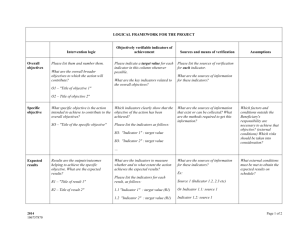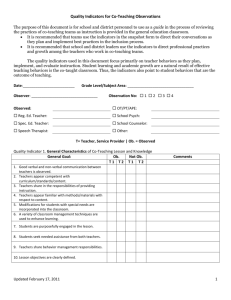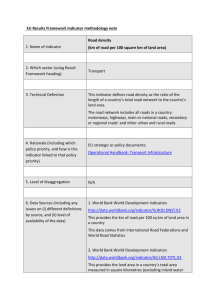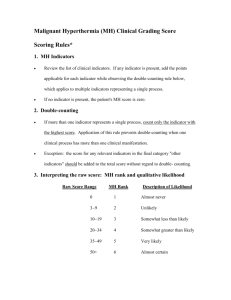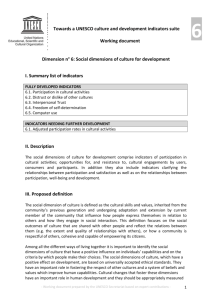to read - Keystone Technology Consultants
advertisement
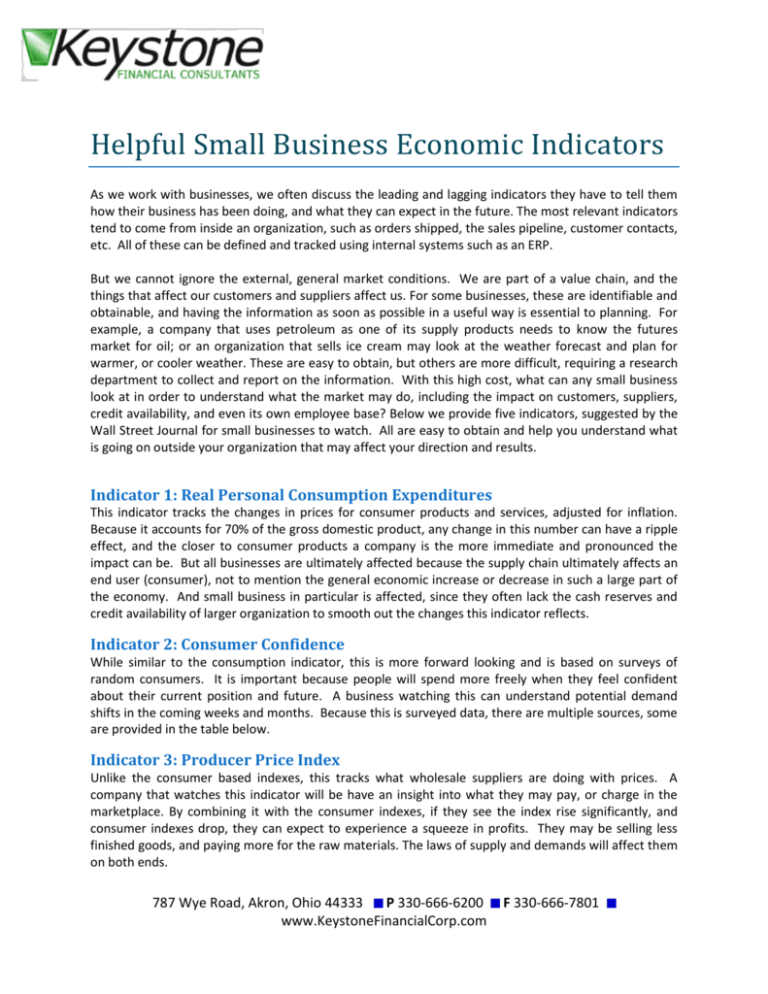
Helpful Small Business Economic Indicators As we work with businesses, we often discuss the leading and lagging indicators they have to tell them how their business has been doing, and what they can expect in the future. The most relevant indicators tend to come from inside an organization, such as orders shipped, the sales pipeline, customer contacts, etc. All of these can be defined and tracked using internal systems such as an ERP. But we cannot ignore the external, general market conditions. We are part of a value chain, and the things that affect our customers and suppliers affect us. For some businesses, these are identifiable and obtainable, and having the information as soon as possible in a useful way is essential to planning. For example, a company that uses petroleum as one of its supply products needs to know the futures market for oil; or an organization that sells ice cream may look at the weather forecast and plan for warmer, or cooler weather. These are easy to obtain, but others are more difficult, requiring a research department to collect and report on the information. With this high cost, what can any small business look at in order to understand what the market may do, including the impact on customers, suppliers, credit availability, and even its own employee base? Below we provide five indicators, suggested by the Wall Street Journal for small businesses to watch. All are easy to obtain and help you understand what is going on outside your organization that may affect your direction and results. Indicator 1: Real Personal Consumption Expenditures This indicator tracks the changes in prices for consumer products and services, adjusted for inflation. Because it accounts for 70% of the gross domestic product, any change in this number can have a ripple effect, and the closer to consumer products a company is the more immediate and pronounced the impact can be. But all businesses are ultimately affected because the supply chain ultimately affects an end user (consumer), not to mention the general economic increase or decrease in such a large part of the economy. And small business in particular is affected, since they often lack the cash reserves and credit availability of larger organization to smooth out the changes this indicator reflects. Indicator 2: Consumer Confidence While similar to the consumption indicator, this is more forward looking and is based on surveys of random consumers. It is important because people will spend more freely when they feel confident about their current position and future. A business watching this can understand potential demand shifts in the coming weeks and months. Because this is surveyed data, there are multiple sources, some are provided in the table below. Indicator 3: Producer Price Index Unlike the consumer based indexes, this tracks what wholesale suppliers are doing with prices. A company that watches this indicator will be have an insight into what they may pay, or charge in the marketplace. By combining it with the consumer indexes, if they see the index rise significantly, and consumer indexes drop, they can expect to experience a squeeze in profits. They may be selling less finished goods, and paying more for the raw materials. The laws of supply and demands will affect them on both ends. 787 Wye Road, Akron, Ohio 44333 P 330-666-6200 www.KeystoneFinancialCorp.com F 330-666-7801 Indicator 4: U.S. Dollar This is an indicator of inflation, and has become more important as we increased trade with countries using other currencies. If the dollar loses value against these currencies, U.S. exports look more attractive to some foreign buyers, since their currency is now worth more to us in U.S. dollars. However, within the U.S. it may take more dollars to purchase the same materials, causing producer prices to rise. There are multiple ways to track this, and if you tend to do business with suppliers or customers in non U.S. dollar markets, you should watch the exchange rate with that currency. But the simplest way to track it across the board is to use a combination of foreign currency exchange rates, especially if they are weighted for trade percentages. A change in the exchange rate with a country that we have a lot of trade with will affect us more the one we do little trade with. Alternatively, you can watch the price of gold, which is inverse to the value of the dollar. The more gold costs the less the dollar is worth, with the opposite also true. Indicator 5: Unemployment Rate As unemployment rises, the other indicators are ultimately affected. When people see the change, and especially when they experience job loss, spending habits will change also. It is an early earning to the consumer based indicators of consumption and confidence. Job loss is one of the greatest fears, and hence one of the greatest impacts to current and planned spending. People who may lose a job hold off on major purchase, and people who have lost them slow hesitate on even minor purchases. It also indicates what the market is doing in terms of expanding and contracting a business; this aspect is particularly true if you can see employment figures in your specific industry. Copyright 2010 Keystone Financial Consultants Page 2 How to Take Advantage of the These Indicators The first thing to do is find the source for these indicators. Some reference sites are shown below. Indicator Reference Sites Real Personal Consumption http://www.bea.gov/newsreleases/national/pi/pinewsrelease.htm Expenditures Consumer Confidence https://customers.reuters.com/community/university/default.aspx http://www.conference-board.org/economics/consumerConfidence.cfm Producer Price Index U.S. Dollar Unemployment Rate http://www.bls.gov/ppi/ https://www.theice.com/productguide/ProductDetails.shtml?specId=194 http://www.fxstreet.com/rates-charts/usdollar-index/ http://www.bls.gov/news.release/laus.nr0.htm http://www.bls.gov/web/laumstrk.htm (state values) These are available at a national level, so that one value applies to all the regional areas and industry sectors. It would be wise to have local results were available, especially for the consumer based indicators. Factors such as unemployment and consumer confidence in your geographical area of service will be very applicable. It would be wise to track these for a period of time to determine which ones are most relevant and how you can understand their impact on your business. These are available in monthly values, so a period of 3-6 months to record the data, and watch your own organization’s results should allow you to begin to get a feel for what the numbers mean to you personally. You can have an idea of how their movement up or down affects you. It would be wise to continue to watch especially how their movement in the opposite direction than you have seen influences you. For example if you saw the consumer confidence index go up, and saw your sales rise, does the same direct relationship to the same degree exist when it falls? You can decrease the time of this evaluation by gathering historical data, and looking at your own historical results, plotting them against each other to see the impact on your business. This whole area falls under business analytics. There are numerous systems large and small to get you comprehensive, helpful tools to understand the relationships between data. You can start with an Excel spreadsheet (a sample is available upon request to Keystone), and work up to more dedicated, capable models for enterprise planning. But jump in early so you understand the relationships that exist sooner, and can respond to future changes to take advantage of the shifts in the marketplace. Copyright 2010 Keystone Financial Consultants Page 3


